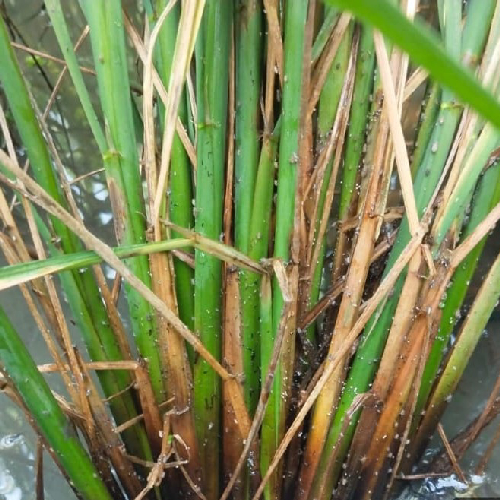
Symptoms:
Yellowing and wilting of plants, hopper burn patches, sooty mould at the plant base, circular dry patches in the field, and complete drying of affected plants. Both nymphs and adults suck sap from the base of the plant, causing leaves to turn orange-yellow, then brown and dry, eventually leading to plant death. Honeydew excreted by BPH also leads to sooty mould development at the base of the plant.
Chemical & Dosage:
Imidacloprid 17.8% SL @ 60 ml/acre (150 ml/ha)
Buprofezin 25% SC @ 320 ml/acre (800 ml/ha)
Trade Name:
Imidacloprid 17.8% SL: Confidor (Bayer),
Admire (Bayer),
Cloda (Kalyani Industries / Creative Unichem),
Green Mida (Greenwell Biotech)
Buprofezin 25% SC: Applaud (Syngenta),
Ambazin (Ambachem Industries),
Buprostar (Rallis India),
Buprosin (Insecticides India Ltd.)
Mode of Application:
Spray on the base of the plants. Spray on the crop base.
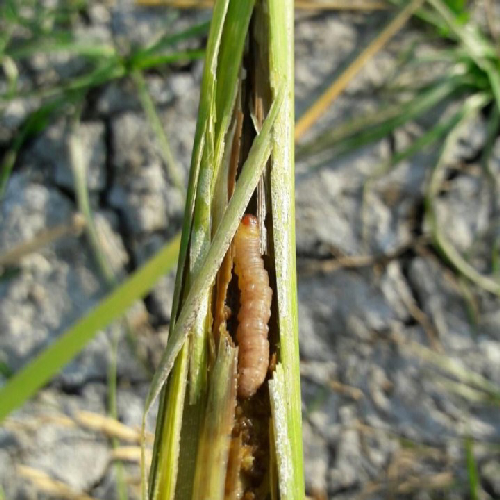
Symptoms:
Dead heart in young plants and white ear in mature crop.
Chemical & Dosage:
Cartap Hydrochloride 4G @ 10 kg/acre (25 kg/ha)
Chlorpyrifos 20% EC @ 400 ml/acre (1 L/ha)
Trade Name:
Cartap Hydrochloride 4G: Caldan 4G (Dhanuka Agritech Ltd.),
Kritap 4G (Krishi Rasayan),
Captap 4G (Sun Brand / Creative Unichem),
KANJO 4G (Parijat Agrochemicals)
Chlorpyrifos 20% EC: Tafaban (Tata Rallis),
Dursban (Dow AgroSciences),
Carbine 20 Nova (Noble),
Darban 20 (Hifield-AG Chem India Pvt. Ltd.)
Mode of Application:
Broadcast Cartap Hydrochloride granules in a standing crop.
Mix Chlorpyrifos in water and spray over affected plants.
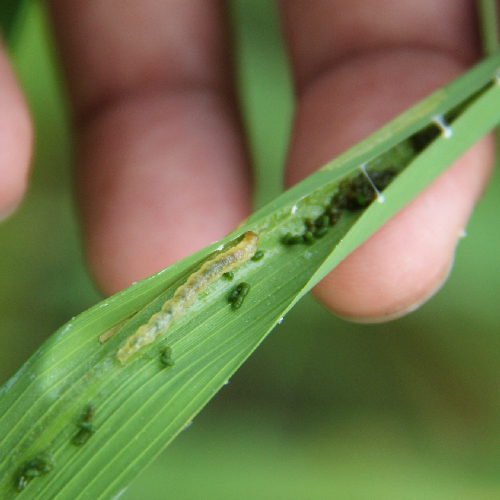
Symptoms:
Leaves get folded lengthwise and become whitish or silvery due to feeding inside the folded leaf. Larvae feed on green tissues, causing windowpane-like damage, reducing photosynthesis and weakening the plant. Severe infestation leads to drying of leaves and reduced grain yield.
Chemical & Dosage:
Chlorantraniliprole 18.5% SC @ 60 ml/acre (150 ml/ha) Spinosad 45% SC @ 60 ml/acre (150 ml/ha)
Trade Name:
Chlorantraniliprole 18.5% SC: Coragen (Syngenta), Ferterra (UPL)
Spinosad 45% SC: Tracer (Dow AgroSciences), Success (FMC)
Mode of Application:
Spray on the crop foliage, especially targeting the whorl and folded leaves, using a knapsack sprayer. Repeat spray if infestation persists after 10–15 days.
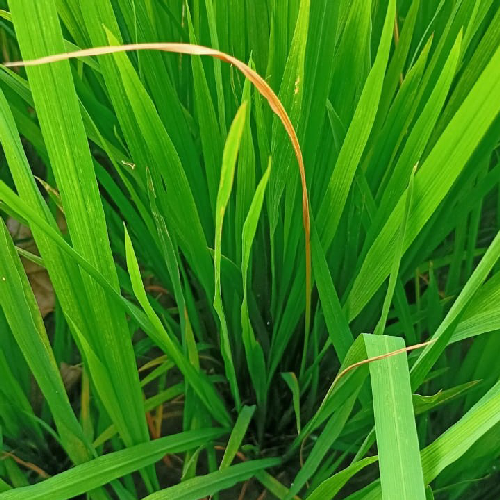
Symptoms:
Formation of hollow, silvery galls (silver shoots) on rice tillers, stunted growth, rolled leaves, and no panicle formation. Affected tillers fail to produce grain.
Chemical & Dosage:
Use chlorpyrifos insecticides as per label instructions.
Trade Name:
Dursban, Lorsban, and other local brands.
Mode of Application:
Spray during the tillering stage when larvae appear. Monitor adults with light traps. Combine chemical sprays with resistant varieties and field sanitation for best control.
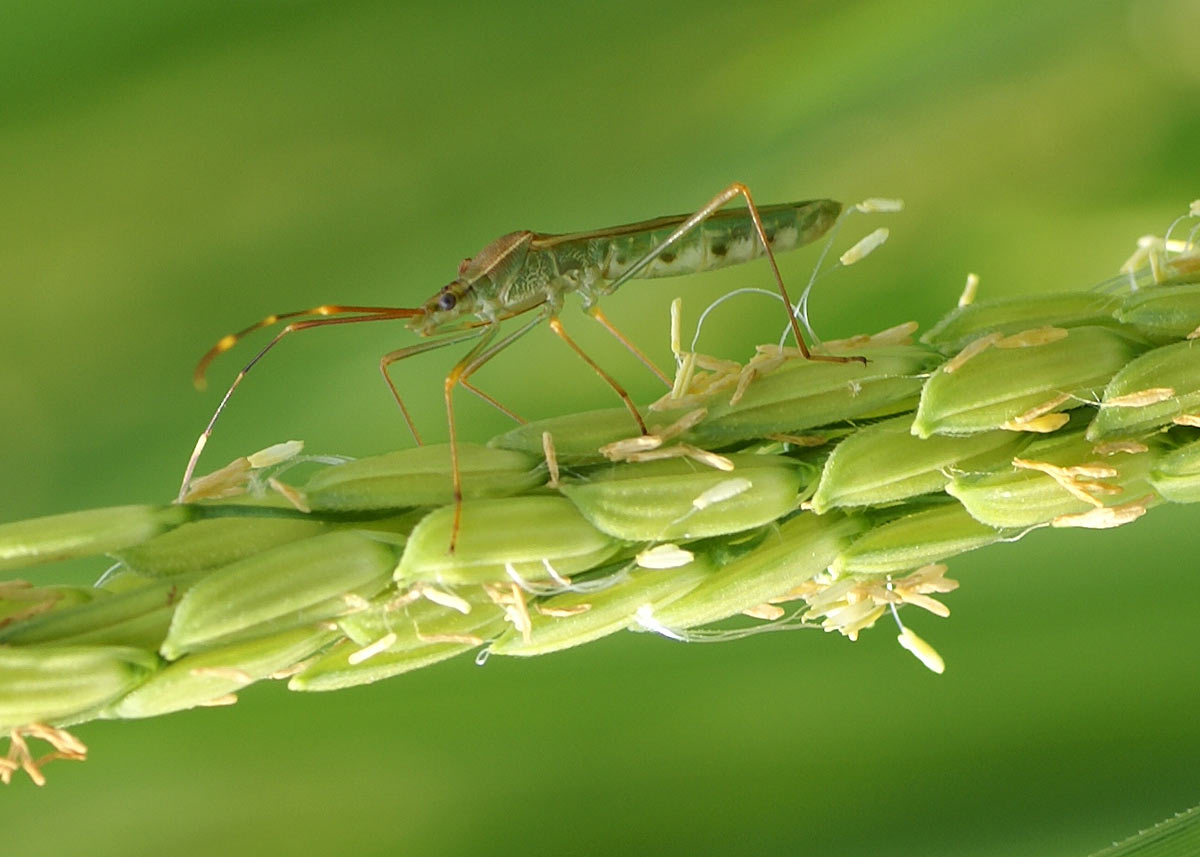
Symptoms:
Adults and nymphs suck sap from developing rice grains, especially at the milky stage. This causes ill-filled, partially filled, or chaffy grains. Infested panicles may stand erect and emit a strong, unpleasant smell (“gundhi” odour). Severe infestation leads to poor grain quality and yield loss.
Chemical & Dosage:
Imidacloprid 17.8% SL @ 60 ml/acre (150 ml/ha)
Malathion 50% EC @ 400 ml/acre (1 L/ha)
Trade Name:
Imidacloprid 17.8% SL: Confidor (Bayer), Admire (Bayer), Cloda (Kalyani Industries), Green Mida (Greenwell Biotech)
Malathion 50% EC: Malathion (Tagros), Cythion (Cheminova), Fyfanon (FMC)
Mode of Application:
Spray on the crop at the flowering to milky stage, targeting the panicles where bugs are present. Ensure thorough coverage for effective control. Repeat spray if infestation persists after 10–15 days.
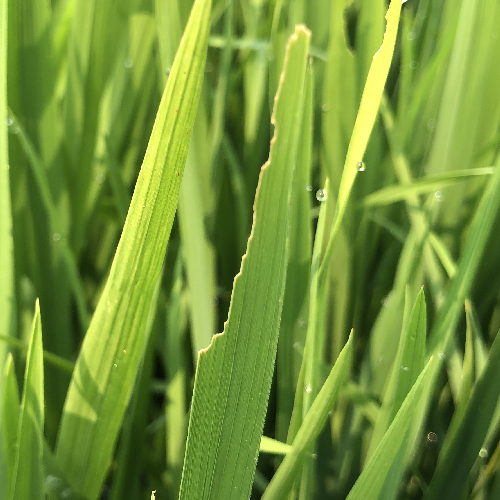
Symptoms:
Nymphs and adults suck sap from the leaves and stems, causing yellowing, curling, and stunted growth. Heavy infestation leads to hopper burn, drying of leaves, and sometimes transmission of viral diseases like rice tungro.
Chemical & Dosage:
1. Buprofezin 25% SC @ 320 ml/acre (800 ml/ha)
2. Imidacloprid 17.8% SL @ 60 ml/acre (150 ml/ha)
3. Thiamethoxam 25% WG @ 40 g/acre (100 g/ha)
4. Pymetrozine 50% WG @ 60 g/acre (150 g/ha)
Trade Name:
Buprofezin 25% SC: Applaud (Syngenta), Buprostar (Rallis India), Buprosin (Insecticides India Ltd.)
Imidacloprid 17.8% SL: Confidor (Bayer), Admire (Bayer), Cloda (Kalyani Industries), Green Mida (Greenwell Biotech)
Thiamethoxam 25% WG: Actara (Syngenta), Anant (Best Agrolife)
Pymetrozine 50% WG: Chess (Syngenta)
Mode of Application:
Spray on the crop canopy, especially targeting the upper leaves where hoppers feed. Repeat spray at 12–15 day intervals if infestation persists. For best results, start spraying when pest population crosses economic threshold (5 hoppers per hill).

Symptoms:
Adults scrape the upper surface of leaves, making white, parallel streaks along the leaf. Larvae mine inside the leaf, causing white patches and windowpaning. Severely infested leaves dry up and look papery or burnt; fields may appear white from a distance. Both adults and larvae reduce photosynthesis and crop yield.
Chemical & Dosage:
Thiamethoxam 25% WG @ 0.5 g/litre of water Lambda Cyhalothrin 5% EC @ 2 ml/litre of water Emamectin Benzoate 1.9% EC @ 1–1.5 ml/litre of water Fipronil 40% + Imidacloprid 40% WG @ 0.2–0.5 g/litre of water Cartap Hydrochloride 50% SP @ 1.5–2.5 g/litre of water
Trade Name:
Thiamethoxam 25% WG: Actara, Citara Lambda Cyhalothrin 5% EC: Reeva 5 Emamectin Benzoate 1.9% EC: Mitlar-E Fipronil 40% + Imidacloprid 40% WG: Police Cartap Hydrochloride 50% SP: Sanvex SP
Mode of Application:
Spray recommended insecticide on the crop foliage, covering both upper and lower leaf surfaces. Target early morning or evening for best results. Repeat spray if infestation persists after 10–15 days.
Want to be part of our next event?